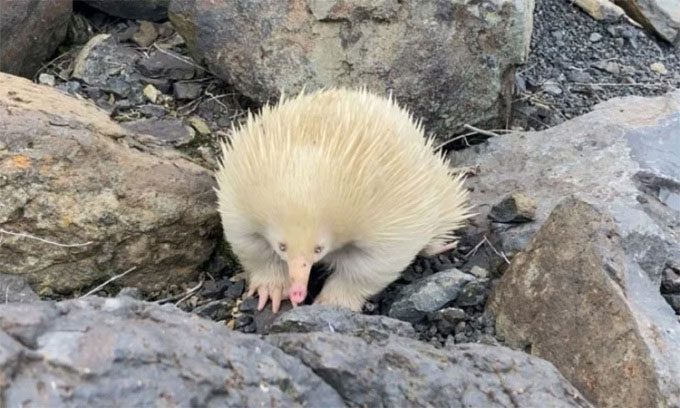A member of the Bathurst Regional Council discovered an albino short-beaked echidna wandering around the city and named it Raffie, after the Raffaello coconut candy.
“The short-beaked echidna (Tachyglossus aculeatus) is very shy and hard to spot. Seeing an albino short-beaked echidna is extremely rare,” a representative from the Bathurst Regional Council told Newsweek on May 5. Albinism causes the animal’s body to not produce the pigment melanin, resulting in its unusual white fur.

The albino short-beaked echidna Raffie in Bathurst has white fur due to albinism. (Photo: Bathurst Regional Council).
The short-beaked echidna is widely distributed throughout Australia. However, they are rarely seen in the wild due to their reclusive nature. According to the Australian Museum, this species is quite recognizable due to its sharp spines, short legs, and distinctive snout.
“Their spines serve as a defense mechanism against predators. When faced with a threat, they roll into a ball, pointing their sharp spines outward, or dig into the ground to ensure safety,” the Bathurst Regional Council representative explained.
The platypus and echidna are among the few mammals that lay eggs. About a month after mating, female echidnas lay a soft-shelled egg in their pouch, which will hatch after approximately 10 days.
The short-beaked echidna plays an important role in the local ecosystem and is often referred to as an “ecosystem engineer.” They spend a lot of time digging and moving soil in search of prey like termites and ants. This activity helps improve soil quality by overturning and mixing organic matter. They break up hard soil, allowing seedlings to grow through, while also enhancing water filtration and increasing soil moisture.
The short-beaked echidna also helps mycorrhizal fungi to spread. This is critical for plant health and biodiversity, as mycorrhizal fungi enhance the ability of native plants to absorb nutrients from Australia’s nutrient-poor soils.




















































